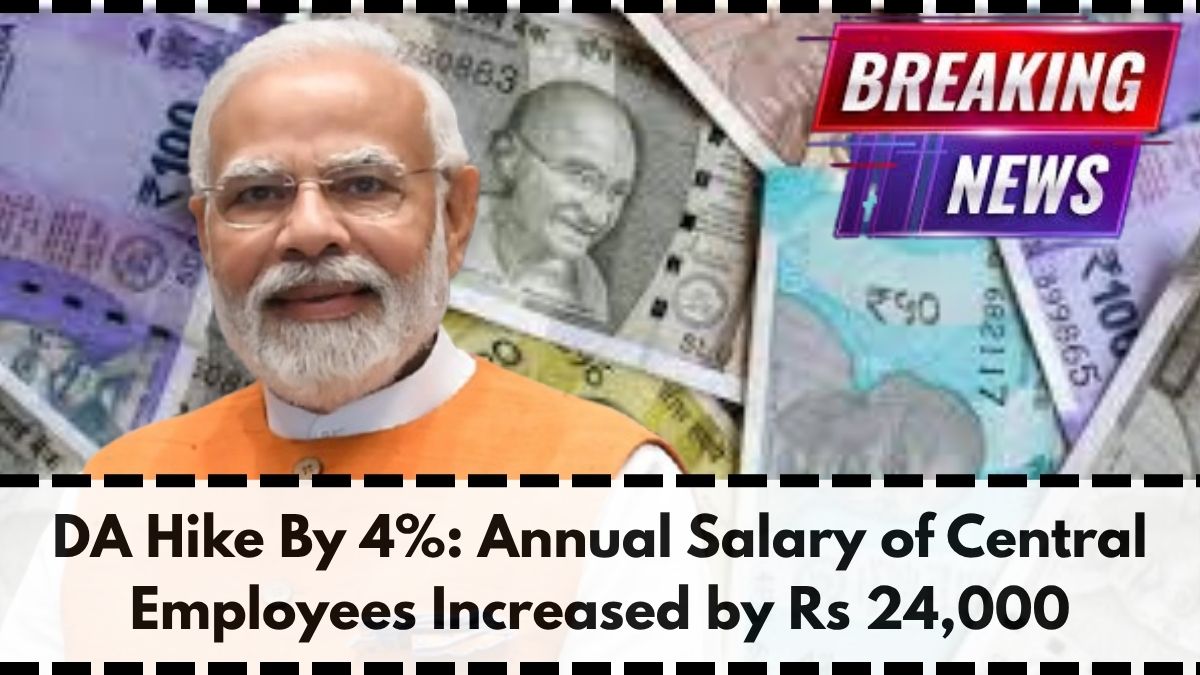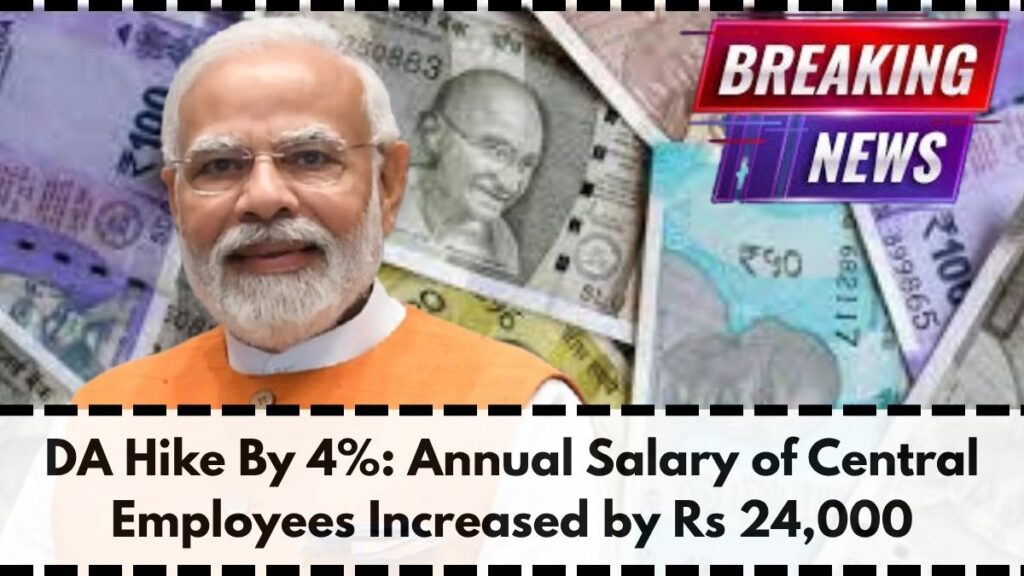In a significant move aimed at improving the financial well-being of central government employees and pensioners, the Union Cabinet has approved a 4% increase in the Dearness Allowance (DA) and Dearness Relief (DR). This decision, effective from January 1, 2025, raises the DA and DR from 50% to 54%, offering timely relief in the face of rising inflation and escalating living costs.
This biannual adjustment aligns with the government’s policy to revise the DA twice a year—once in January and again in July—based on changes in the Consumer Price Index for Industrial Workers (CPI-IW).

Summary Table
Aspect |
Details |
|---|---|
Announcement |
DA/DR Hike Approved by Union Cabinet |
Effective Date |
January 1, 2025 |
Previous Rate |
50% |
Revised Rate |
54% |
Beneficiaries |
47 lakh employees, 69 lakh pensioners |
Monthly Increase (Example) |
₹720 for basic pay of ₹18,000 |
Annual Financial Impact |
₹12,868 crore |
Next Steps |
Arrears to be paid, reflected in salary/pension |
Official Portal |
What is Dearness Allowance?
Dearness Allowance is a cost-of-living adjustment that the government provides to its employees and pensioners to help offset inflation. It is calculated as a percentage of the basic salary and is revised periodically. The purpose is to maintain the real value of income despite rising prices.
Overview of the DA Hike
The DA hike increases the allowance from 50% to 54% of the basic salary. This increase will benefit:
-
47 lakh central government employees
-
69 lakh pensioners
This updated allowance will be reflected in the upcoming salary and pension disbursements, with arrears due from January 2025 being credited retroactively.
Financial Impact on Employees
This increase means a tangible boost in the take-home salary for employees. For instance:
-
An employee with a basic pay of ₹18,000 will now receive ₹9,720 as DA, compared to ₹9,000 earlier.
-
This equates to an increment of ₹720 per month or ₹8,640 annually.
-
On a broader scale, the yearly hike in income (DA component only) can be as high as ₹24,000 to ₹60,000, depending on the pay level.
This revised DA is likely to provide employees with more purchasing power and ease the pressure of increased living costs.
Pensioners to Gain from Dearness Relief Hike
Retired government employees will also benefit from a parallel 4% hike in Dearness Relief (DR). This mirrors the increase provided to current employees, ensuring that inflation does not erode pension income. The revised DR will be applicable from January 2025, and the adjusted pension amount will be credited starting with the next cycle of pension disbursements.
Budgetary Allocation and Fiscal Responsibility
While the total estimated cost to the exchequer for this revision is ₹12,868 crore per annum, the government has deemed it fiscally sustainable. This move is seen not just as employee welfare but also as an economic stimulus:
-
Boost in consumer spending during festival and budget cycles.
-
Likely uptick in demand across retail, services, and housing sectors.
-
Indirectly benefits private sector through multiplier effect on consumption.
Response from Employee Unions
Central government employee unions have responded positively to the DA hike:
-
Appreciation has been expressed for the government’s responsiveness.
-
Unions see it as a step toward ensuring employees’ financial security amid inflation.
-
However, they are also urging the government to clarify its stand on the 8th Pay Commission, which is under discussion for further pay revisions.
Political and Economic Timing
This decision comes at a crucial time:
-
It precedes the Union Budget 2025–26, which may announce additional welfare measures.
-
It follows general elections, indicating a focus on post-election economic management and public welfare.
-
Coincides with the festive season planning phase (mid-year), which could benefit from increased liquidity in households.
FAQs on the 4% DA Hike
1. When will the new DA be reflected in salaries?
The revised DA will be effective from January 1, 2025, and employees can expect the updated amount (including arrears) in their upcoming salary cycles.
2. Does this increase apply to pensioners as well?
Yes, the government has also approved a 4% increase in Dearness Relief (DR) for central government pensioners, effective from the same date.
3. How is the DA calculated?
DA is calculated based on the Consumer Price Index for Industrial Workers (CPI-IW). The percentage is revised biannually—every January and July.
4. Is the 4% hike uniform across all pay levels?
Yes, the 4% increase is uniformly applied as a percentage of basic pay, which means the absolute amount will vary based on an individual’s salary grade.
5. What is the future outlook for DA?
Future revisions will depend on inflation trends and CPI data. The next expected review will be in July 2025.
6. Are state government employees also affected?
This specific hike applies only to central government employees and pensioners. However, many state governments follow central guidelines and may announce similar increases.
Conclusion
The 4% hike in Dearness Allowance and Dearness Relief is a timely intervention by the Union Government, addressing the rising cost of living for millions of current and former employees. While it places a financial responsibility on the exchequer, the move is expected to stimulate economic activity and reinforce the government’s commitment to employee welfare. With the next revision due in mid-2025, all eyes will be on inflation trends and future policy responses.
For more details and official updates, visit the Press Information Bureau (PIB).
For More Information Click Here





